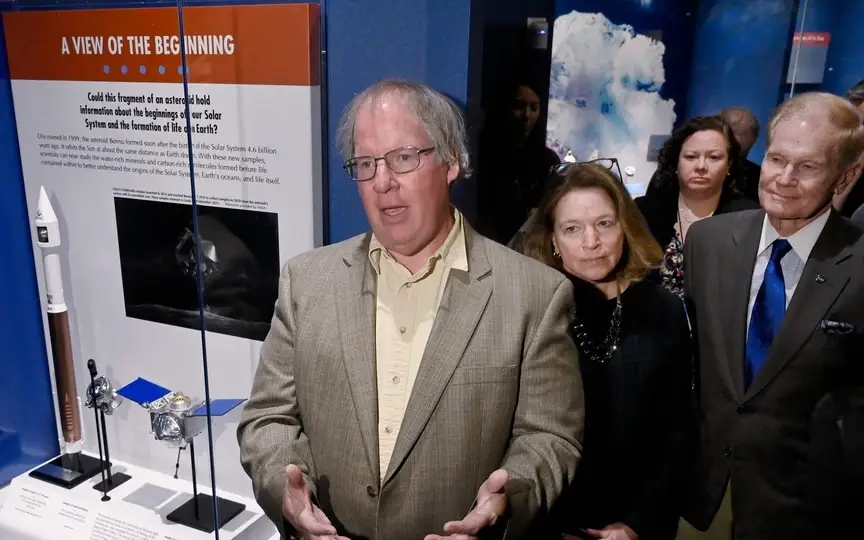Unveiling the Wonders of Space: NASA’s Bennu Sample on Display at Smithsonian Museum
In September, NASA achieved a significant milestone as the OSIRIS-REx mission concluded triumphantly. The spacecraft successfully journeyed an astounding 6.2 billion kilometers to rendezvous with an asteroid called Bennu in the depths of space. It diligently gathered samples, which were subsequently transported back to Earth. These unprecedented samples hold the potential to provide insights into the origins of our planet, the existence of life, and the solar system as a whole. As a testament to this momentous achievement, a small portion of this sample has been proudly displayed at the renowned Smithsonian’s Museum of Natural History, allowing visitors to marvel at this historic accomplishment.
According to a report by Payload Space, the asteroid sample was unveiled at the museum on Friday. The unveiling was a solemn occasion when the stone was placed in the museum’s meteorite gallery. Bennu has been given his own enclosure, where he sits in a stainless steel container surrounded by the OSIRIS-REx spacecraft and Atlas V rocket.
Asteroid Bennu placed in the Smithsonian Museum
The claim that these asteroid samples could unlock the mysteries of early life on Earth is not just hype. Scientists have explained that the carbon molecules in these samples are essential to the evolution of life, and studying them can reveal how life could have originated on Earth. This asteroid is believed to have been cut from the same cloth that formed our solar system and has remained untouched by space. It’s a kind of untouched piece of rock that can show us exactly what the world was like billions of years ago.
“During the four and a half, five billion years of evolution of this solar system, the 13.8 billion years of evolution of the universe and its billions of galaxies, each with billions of stars, these things collide and some gas clouds form and spit out stars. Then all of this collides to each other… In the end, we have a remnant of that. It’s all part of our effort to try to understand who we are, where we are in space on this Earth,” NASA Director Bill Nelson said during the event, reported Space.com.
OSIRIS-REx was not the first probe to encounter an asteroid and bring back samples for study. Japan managed the feat twice, returning celestial dust in 2010 and 2020. But the amount collected, an estimated 250 grams, dwarfs that returned by Japan’s missions, with Hayabusa2 managing just 5.4 grams.
One more thing! ReturnByte is now on WhatsApp channels! Click here to join so that you never miss any updates from the world of technology.




